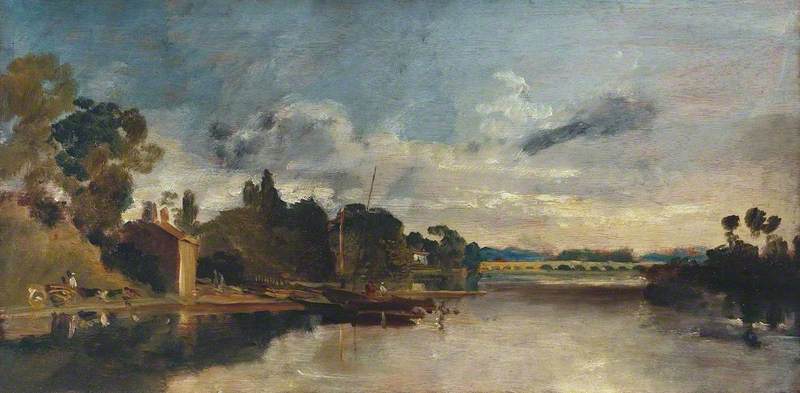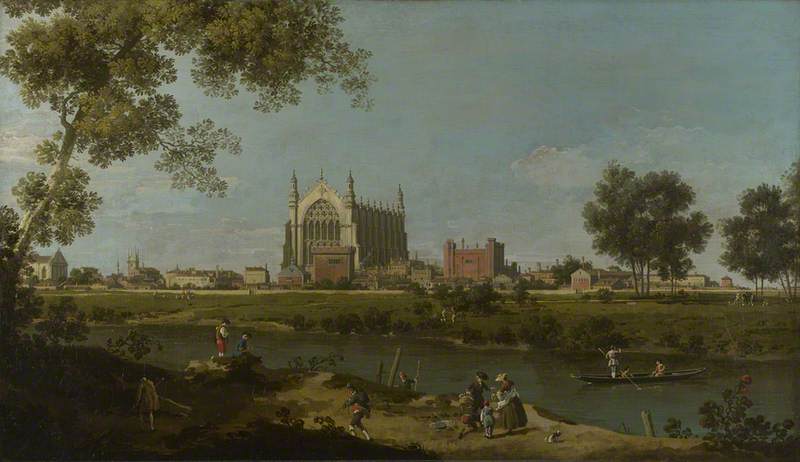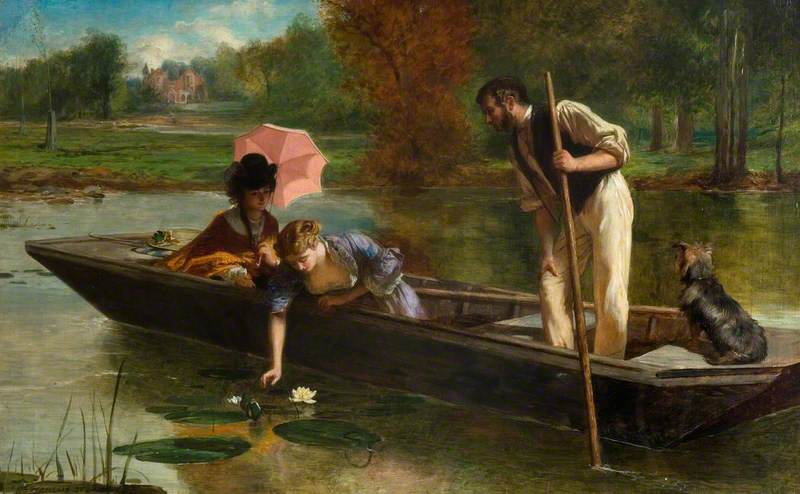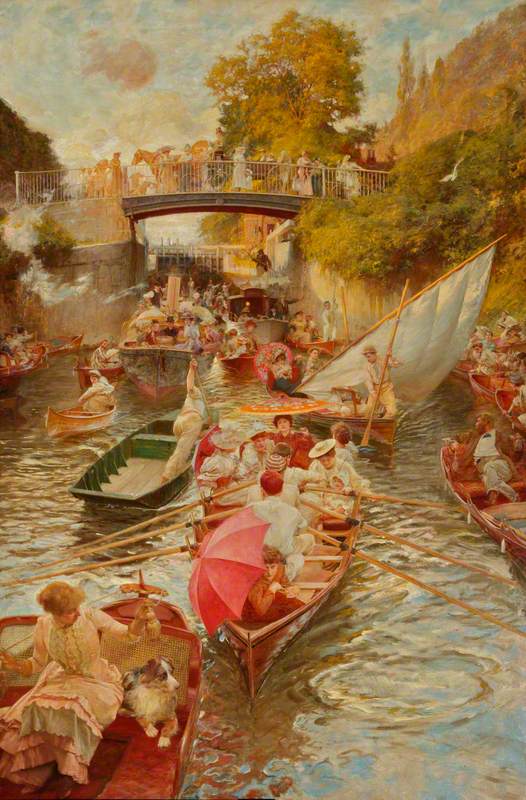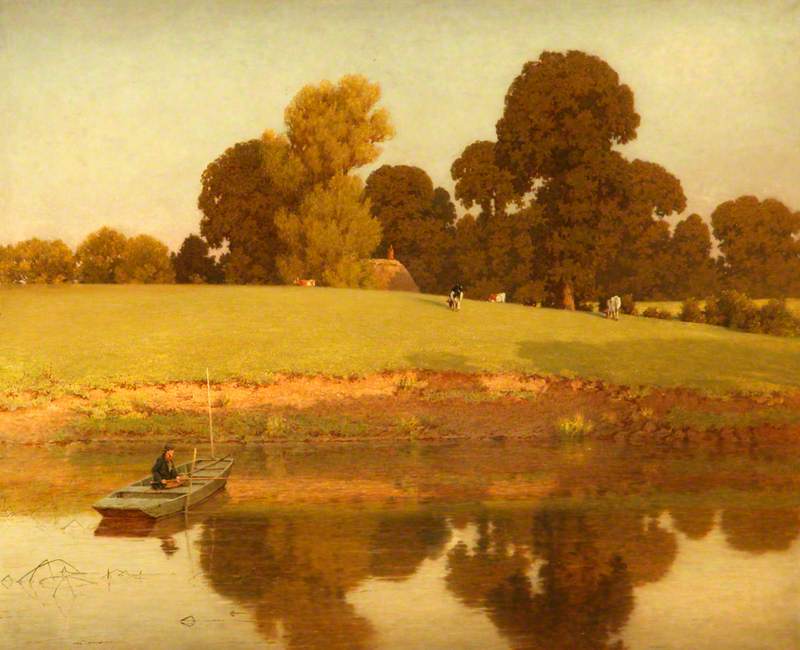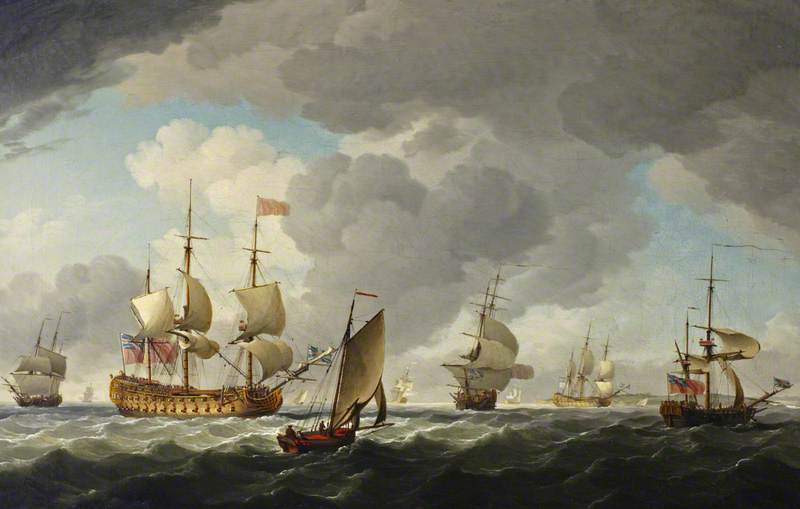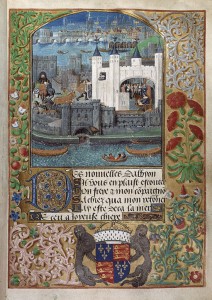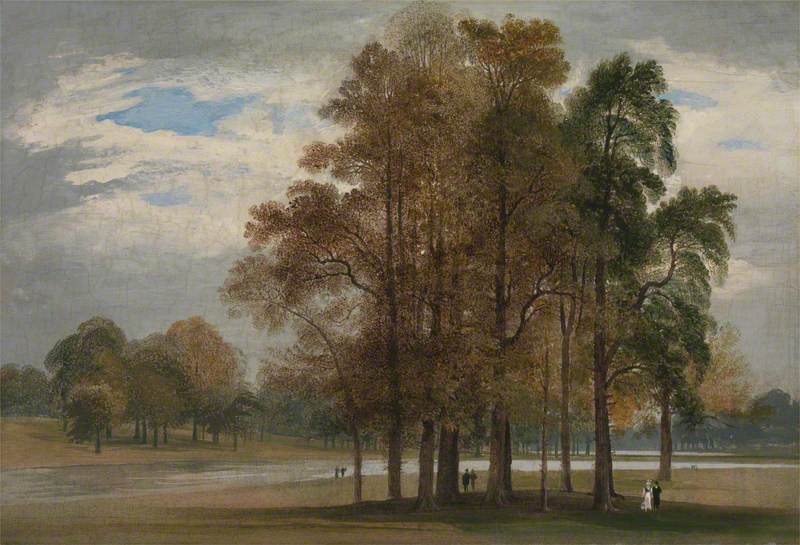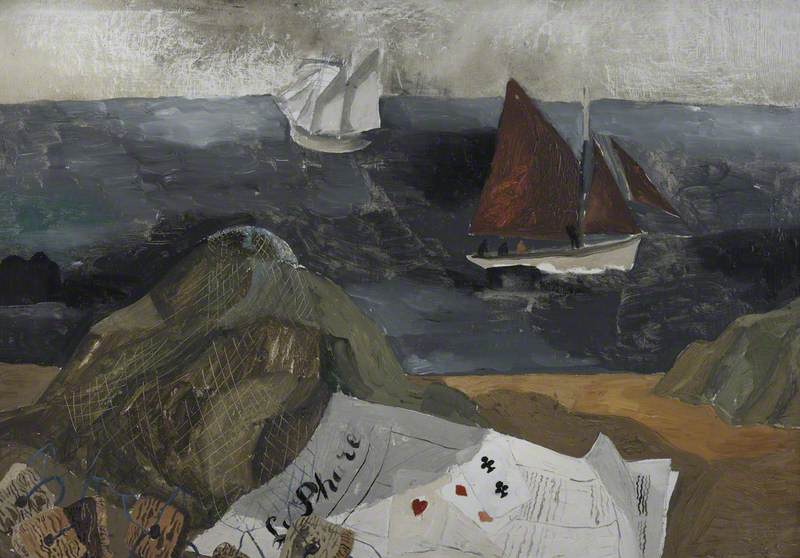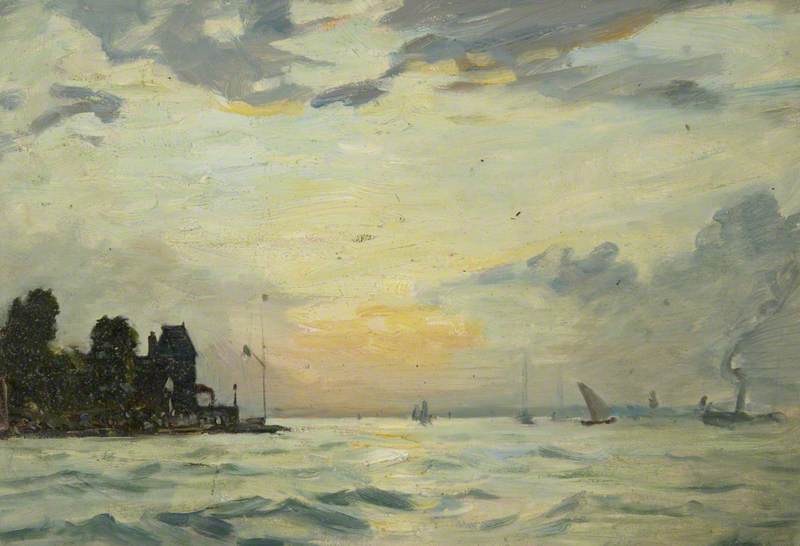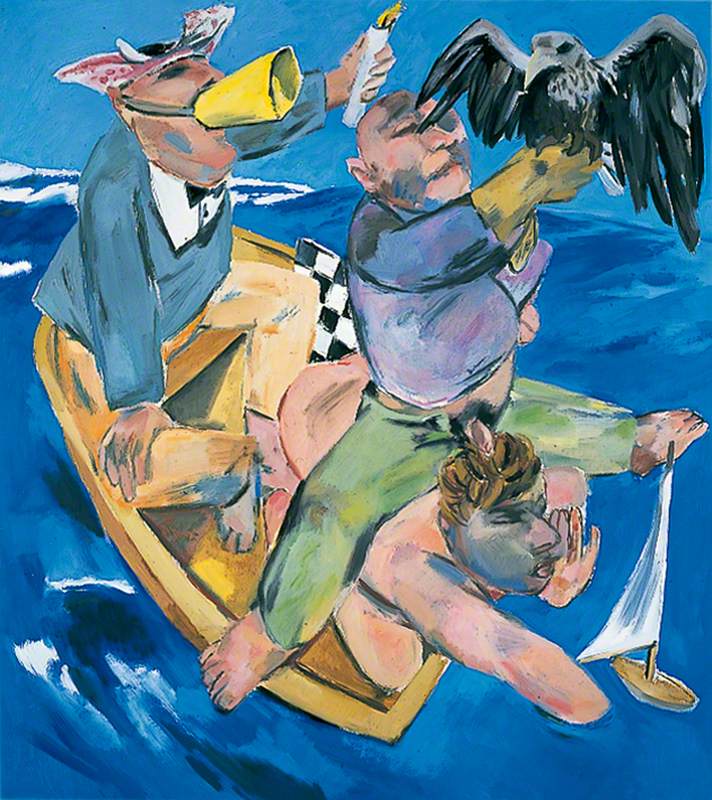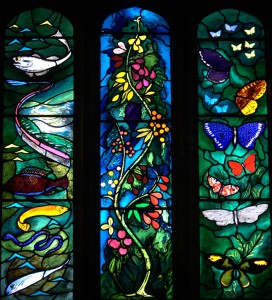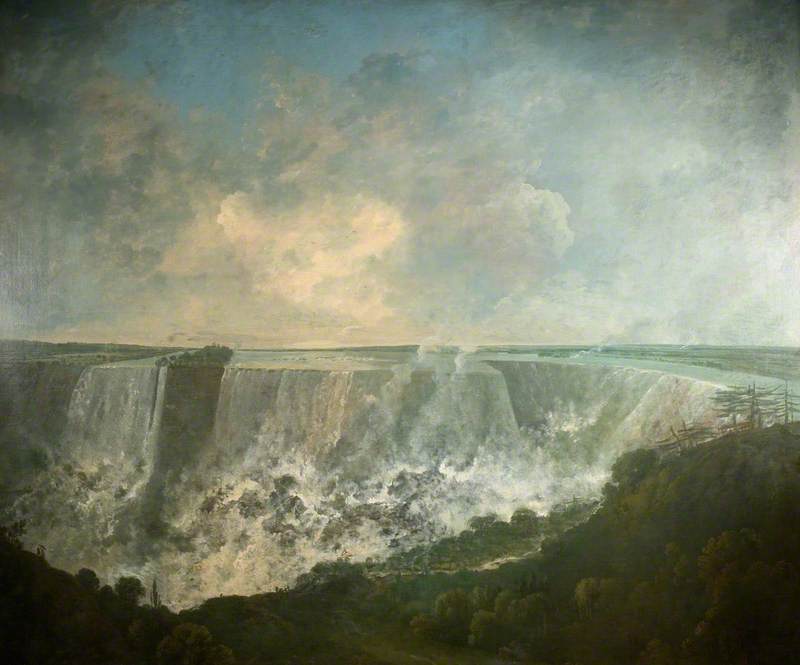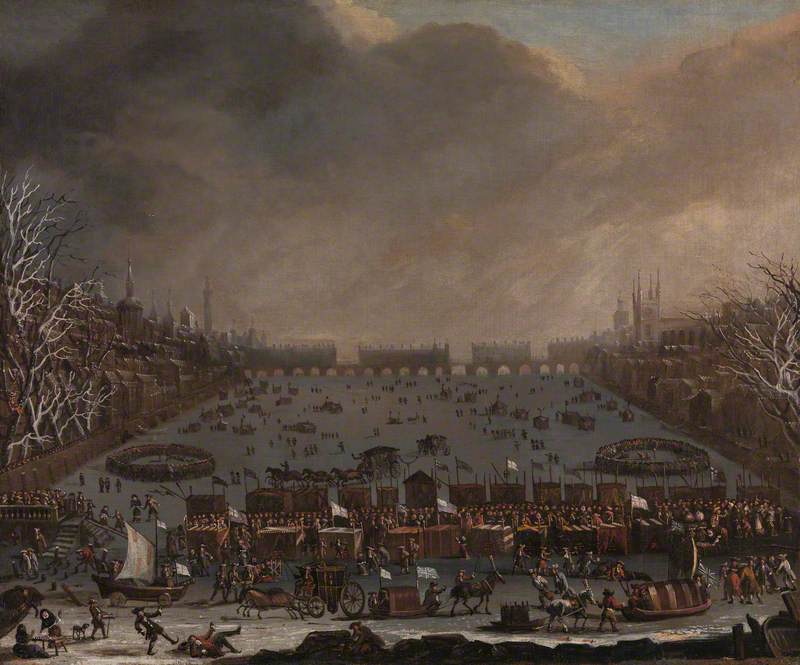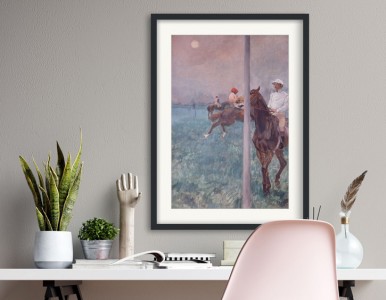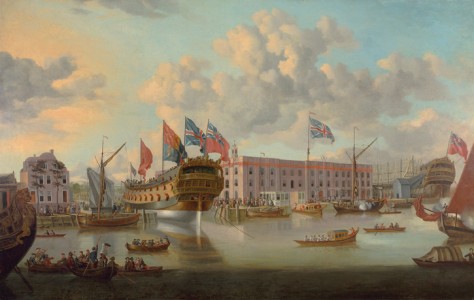The Thames represents a central curving spine for the history and southern landscapes of England. Rising in Gloucestershire and snaking through Oxfordshire, Berkshire and Buckinghamshire, from the edge of the Cotswolds and through the Chilterns, it defines both a commercial and royal route and the position of London as a great metropolis. Once through the City, it expands dramatically to form the broad Estuary between Essex and Kent.
Its upper reaches have been part of my life since the age of 13 when I first learned to row, and spent many days training on the longer stretches between locks upriver. I keep a punt in Oxford, and in recent years have returned to the sport of racing punting, competing each year at one or two of the punt regattas at Thames Ditton, Wraysbury, Cherstey or Maidenhead.
1.
Much of Turner’s life was spent near the Thames. In 1805 he rented a house at Isleworth, and made many trips exploring the river and its various tributaries, producing delightful, direct, oil sketches. Turner was a keen fisherman and to get this broad view he secured his boat mid-stream. The resulting view of Walton Bridges, with barges moored up in the middle of the scene, is typical of this period.
2.
Canaletto made several visits to Britain between 1746 and 1756. In this view across the Thames, the striking shape of Eton College chapel rises high above the other college buildings. The small boat mid-stream has the look of a Venetian sandalo, the everyday working boat of the Lagoon. But the standing figure has a pole rather than an oar (as you would in a Venetian boat) so bears some relationship to figures Canaletto might have seen on the river in England.
3.
The male figure escorting the two young women on a trip on the river is most likely a friend but could be a hired waterman. In the second half of the nineteenth century the Thames - as trade declined with the expanding rail network and leisure time increased - became a place of ‘pleasure’, culminating in what was termed the ‘boating craze’ of the 1880s.
4.
Gregory’s virtuoso painting was the result of many years work, and captures the frenetic scene at one of the busiest locks on the Thames, just upstream from Maidenhead on Sunday of Ascot week. It includes various wooden rowing skiffs, a Canadian canoe paddled by a ‘new woman’, a fishing punt, a steam launch and, at the back of the lock, an Immisch Electric launch, developed in the late 1880s to counter the perceived noise and nuisance of steam boats.
5.
The boathouse in Cookham, where Stanley Spencer grew up, was one of several owned by the Turk family, from which they rented skiffs and punts in the summer. These are ‘saloon punts’, longer and more elegant than fishing punts, and designed for day trips towards Clivedon downstream or Bourne End and Marlowe upstream.
6.
George Dunlop Leslie, the son of C. R. Leslie (the first biographer of John Constable) became a successful genre painter associated with the St John’s Wood Clique in the mid-Victorian period. From 1884 he rented a house in Wallingford, and wrote three books relating to the Thames, including Our River (1888), which argues for the particular virtues of punting. Pictured in wonderful early autumn light is a classic fishing punt, with a central wet well for keeping fish alive until time to take them ashore.
7.
Folly Bridge and Friar Bacon's Study
Michael Angelo Rooker (1746–1801) 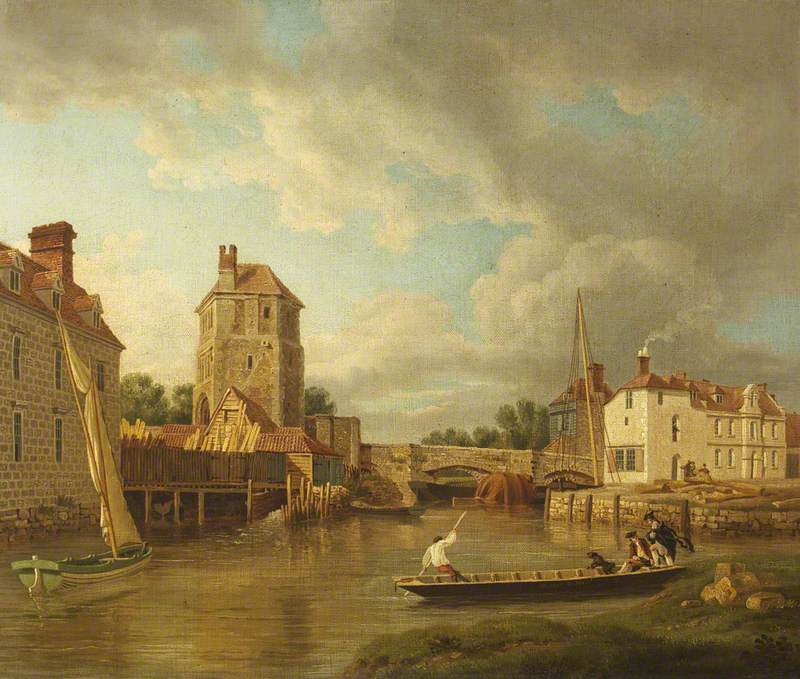
Much of this scene at Folly Bridge is still unchanged, though there is no longer a weir across part of the stream as there was in the eighteenth century when Michael Rooker painted this view, and Bacon’s study is no more. Wooden ferry punts, however, are still used today by the college boatmen.
Sandy Nairne, historian and curator. Former Director of the National Portrait Gallery
